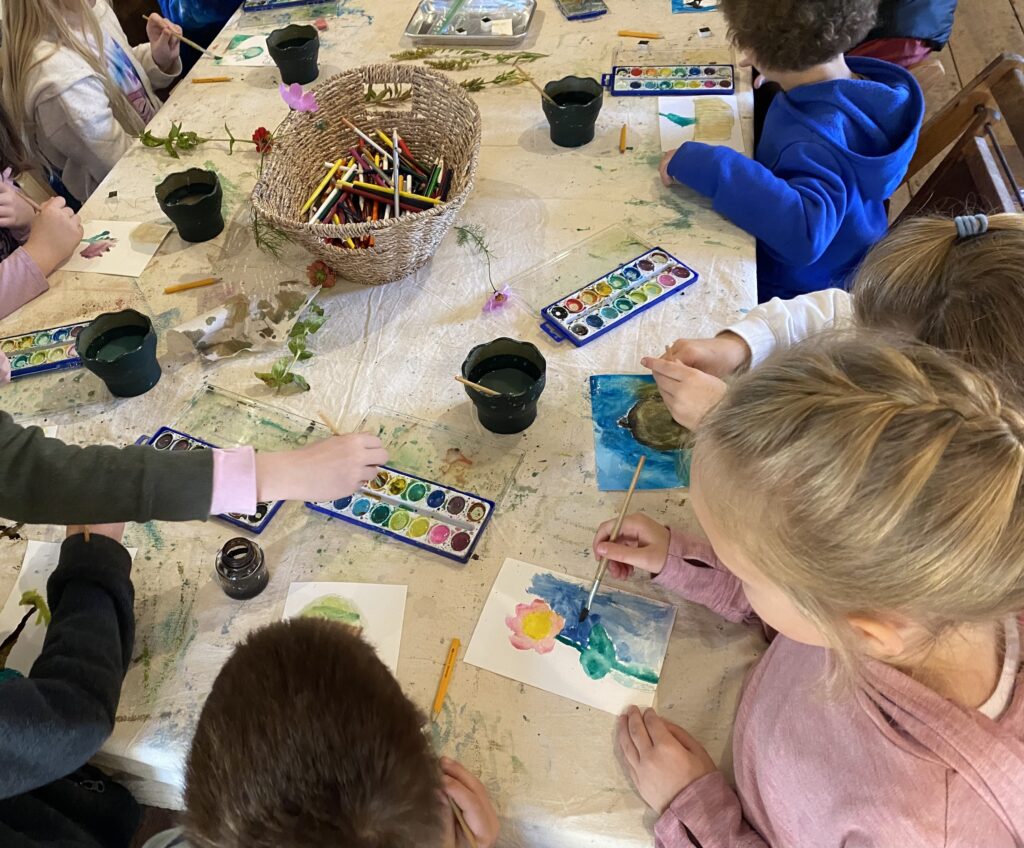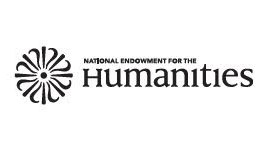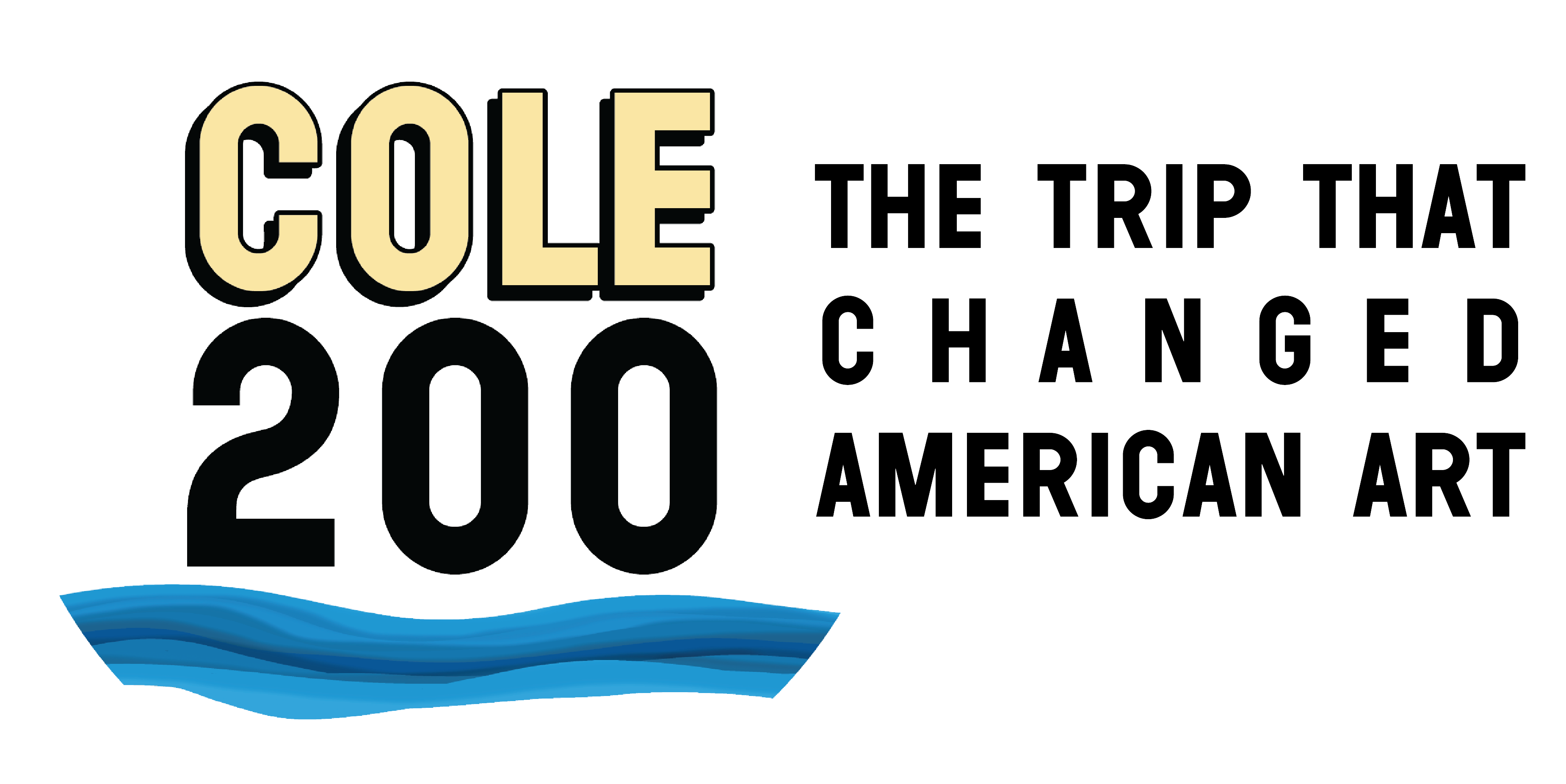School & Youth Visits
Schedule an Educational Program at the Historic Site or in Regional Classrooms
Join our upcoming teacher workshop, Industry, American Identity, and Art in 1825, on Thursday, November 13, open to all K-12 educators.
Learn more and register here.

Teachers can email our Education Coordinator Beth at education@thomascole.org with questions.
Visit Times
School visits are available Monday-Thursday, between 9am-4pm.
How We lead Student Tours
We use American landscape paintings to explore topics of American history, art, and ecology, aligned with New York State curriculum subjects.
Learning to look closely at art can deepen skills of observation and learning comprehension. We use landscapes and special exhibition artworks to help students connect to classrooms topics of history, science, and art.
Art-making and engaging in conversations about art helps to develop important skills (like collaboration, creativity and visual literacy) that can be used across all disciplines.
In our work with students, we focus on Thomas Cole’s work as an artist, writer, and early environmentalist. We believe that concentrating on these three identities helps students understand that myriad worldviews, tools, and identities are useful in understanding, communicating in, and creating change in the world.
We use artworks as a jumping off point to have complex conversations about environmental science, technology, history, ideas related to progress, and our relationships to land.
Honing our skills as artists, writers, and environmentalists allow us to become better thinkers, communicators, observers, collaborators, and makers of change. We believe that memorizing dates and names is less useful than understanding history and our world today through discussion and creation; for students, the experience of seeing, making, and talking about art will aid them for the rest of their lives, in and out of school.

Choose your tour
Thomas Cole: Artist, Writer, and Early Environmentalist
Best for: All Classes, Grades K-12
How can we use many tools to express our ideas?
This tour is highly student-centered, incorporating group discussion, movement, and inquiry with contextual information about Thomas Cole and his creative process, the Industrial Revolution, and life in the early 1800s. In this tour, students learn about Thomas Cole’s work as an artist, writer, and early environmentalist as they tour through the historic house that he lived in and the studio where he painted for over seven years.
Tour: 45 minutes
The Creative Process
Best for: Art and Art History Classes, Grades K-12
How do we create art from our experiences in nature?
This tour focuses on how Thomas Cole created art, from closely observing and sketching nature, deciding on what to leave in and take out, to mixing his own paints and creating his compositions. Students will also learn about the lives of artists Sarah and Emily Cole, the Hudson River School of Art, and tour the historic house, kitchen garden, and painting studios. Optional: Students can engage in hands-on art-making, writing, and environmental action activities.
Tour: 45 minutes
Tour with activity: 75 minutes
Contemporary Art & Landscape
Best for: Art and Art History Classes, Grades K-12
What is a landscape?
Through close-looking at works by Thomas, Sarah, and Emily Cole and contemporary artists in our special exhibitions, students will explore what defines landscape art. This tour will give students an opportunity to learn about how artists working today approach making art about land. Students will also tour the historic house and artist studios. Optional: Students can engage in a hands-on activity where they can make their own land art.
This tour is available with special exhibitions featuring contemporary artworks. Explore Emily Cole: Ceramics, Flora, and Contemporary Responses, on view May 3-Nov 2, and On Trees: Georgia O’Keeffe & Thomas Cole, on view June 21-Dec 14.
Tour: 45 minutes
Tour with activity: 75 minutes
The Historic Household
Several people lived and worked at the historic property and contributed in significant ways to this place. The histories of these individuals shed light on the topics of slavery, mental health, women’s rights, immigration, and more. We are happy to discuss with educators how to incorporate these topics into your school visit. We offer the following speciality tours that may be scaled appropriately for different grade levels. Browse our Historic Household page to learn more.
Women’s History at the Historic Property • Black Labor & Legacy at the Historic Property

Hands-On Activities
Make art at the historic site inspired by landscape, exhibition themes, and aligned with K-12 curriculum. Click the button below to view our full list of activity descriptions and curriculum alignments.
Pricing
$10/K-12 student
$5/student for additional activity fee (if selected)
Public school students in Columbia and Greene County receive free admission
For college/university rates, please click here.
Please note that school group rates are only available when scheduled in advance.
*NEW*
COLE 200: Classroom Lesson Plan
Sarah Cole and her brother Thomas both grew up to be artists. Read the Thomas Cole for Kids story, Picturing America.
Before Your Visit
Pre-Visit Materials
Grades K – 4
We teamed up with beloved children’s book author and illustrator Hudson Talbott to present Thomas Cole’s illustrated story online for free. The story introduces young children to Thomas Cole, the 19th-century artist and founder of America’s first major art movement. The story follows Cole’s ups and downs as an economic migrant displaced by the Industrial Revolution in England who fell in love with the American wilderness and advocated for the preservation of this nation’s landscapes.
Grades 5-12
Once you have booked your visit, please consider downloading our “Pre-Visit Packet” which orients students grades 5-12 to Thomas Cole, his home, and the ideas that mattered to him.
To learn about our in-classroom educational programming, please visit Teacher Resources.
Made possible with the generous support of the Warner Foundation
Supported in part by the New York State Council on the Arts with the support of the Office of the Governor and the New York State Legislature.
Additional support provided by Susan Ball & John Brigham, Patti Hanson, Richard & Elizabeth Mason, Nina Matis & Alan Gosule and Alan C. Wanzenberg.
The Program Endowment that supports educational programs at the Thomas Cole National Historic Site has been made possible in part by a major grant from the National Endowment for the Humanities: Exploring the human endeavor. Any views, findings, conclusions or recommendations expressed in this the programs do not necessarily represent those of the National Endowment for the Humanities.


